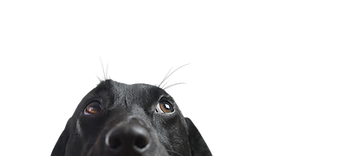Resources for reactivity
- Tanzi Leary, CDBC, CPDT-KA, PMCT1, SAPT, FFCP
- Mar 1, 2023
- 4 min read
Updated: Dec 26, 2024

What is reactivity? It's a catchall term for behavior typically exhibited on a leash or behind a barrier like a door or a fence. The dog is usually barking, lunging up and down, or running back and forth, and generally seems out of control. This behavior can be driven by frustration at the barrier or by emotions like fear, which are designed to drive away the threat.
What's the threat, also known as a "trigger?" Usually, it is a stranger or another animal, and sometimes it is a vehicle. Vehicles might include bikes, scooters, cars, large trucks, etc. Anything that a dog perceives as a threat can be problematic. Some dogs exhibit worsened behavior in their homes and yards. We might call that territorial, and I tend to think for some dogs, it's less about protecting a space or a person and more about their increased confidence and comfort on their home turf.
How do you stop your dog from lunging and barking at dogs, people, or vehicles? The best approach to changing this behavior is multi-faceted, and I will share the major steps and some resources here. Each dog is an individual, and this advice should be customized for specific dogs.
Discuss the issue with the vet to rule out medical issues and consider whether a long-term, daily medication to lengthen the dog's fuse is appropriate. A vet behaviorist will give the most nuanced approach. You can search for one here, and some do work remotely. If your dog has pain, this can influence behavior both by making your pup irritable and also because barking often exacerbates pain, and the pain may be associated with the sight of the trigger.
Minimize stressors, including no exposure to triggers other than during planned training setups. My clients tend to dislike this one! But if you don't minimize exposure, the dog will continue to practice the emotional behavior, and you will not make progress, plus the dog will continue to have an elevated stress level. This is not easy if you don't have a fenced yard, and you may have to walk at odd times of day, use yards from Sniffspot for exercise, or drive to quieter places like hiking trails and cemeteries or empty parking garages or parking lots. Do not allow access to windows if your dog barks at passersby. Either prevent access to that room or use window cling to block the view.
Remove all aversive tools and behaviors from training. No prong /pinch collar, no choke collar, no shock collar even if you use just the tone or vibration, no yelling, no pulling up on the leash, no hitting, and so on. You are adding fuel to the fire by adding pain to your dog's body when he is in an emotional state. If you are worried about hanging on to your dog, look at harnesses with the leash attached at the chest, not the back, and possibly a hands-free belt leash, and for very large dogs, you could condition your dog to wear a head halter (your hands must be very gentle on the leash at all times to avoid injuring his spine.)
In controlled training setups, pair the experience of noticing the trigger with very high-value food briefly, then take a break that's about three times as long, then repeat. This video gives excellent instructions. For instance, I might walk a dog out to see another dog, allow the dog to notice, which takes a second or two, then feed a steady, continuing stream of chicken for about 8 to 10 seconds, then retreat for at least 30 seconds, longer if I think my dog needs a break. This is called counterconditioning and desensitization. During breaks, I encourage the dog to sniff and wander.
There should be water available.
High-value food is typically lean meat, but you will want to find a few of your dog's absolute favorites.
You must find a distance where your dog can see the trigger without a reaction, known as being "under threshold," so this may be quite far initially. You should also be in a place where no other triggers will pop out and surprise you. I like to use classes for this work when possible, or at least an area where I can use elevation, shrubs, parked cars, and other visual barriers to give the dog a break between training trials.
Watch for the dog to anticipate the sight of the trigger in an anticipatory way, where the dog realizes the chicken is coming.
Only add difficulty when you have had several successes, and plan to work over about a 6-week period. Challenges may be added by making one change at a time, like decreasing distance, adding activity to the trigger, changing the angle of the trigger in relation to your dog, and so on. The rule of thumb is not to push, and if you think things are moving too slowly, slow down. It should be very uneventful training.
Recommended Resources for additional information:
Classes available via Zoom
Classes in the Baltimore County metro area and just beyond include The Coventry School, Oscar Winning Behavior, Unleashed Joy, and Dog Eared Training
Trainers may also use games that build on the technique above to teach dogs to voluntarily look away from triggers like Look at That or Engage /Disengage.
Reactivity discussion by Dr. Ropski




Comentarios